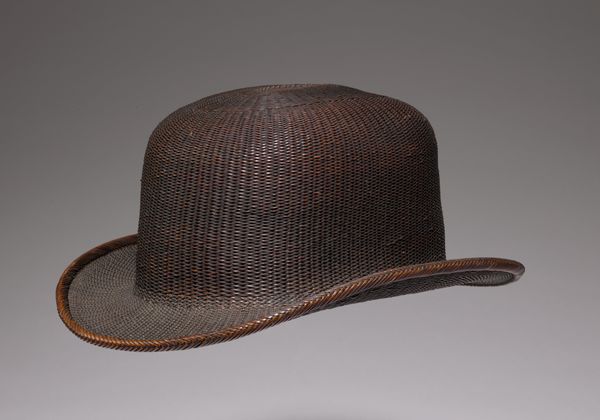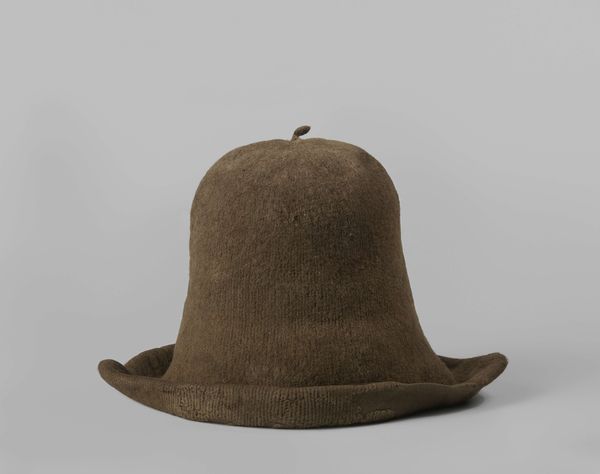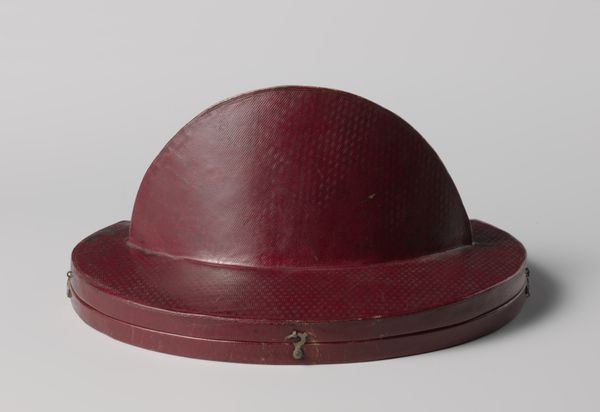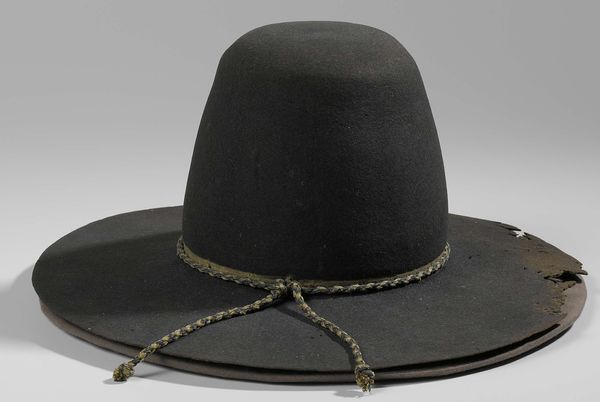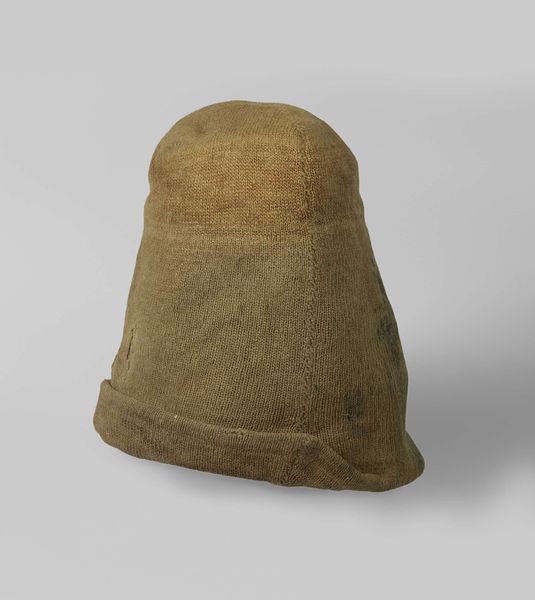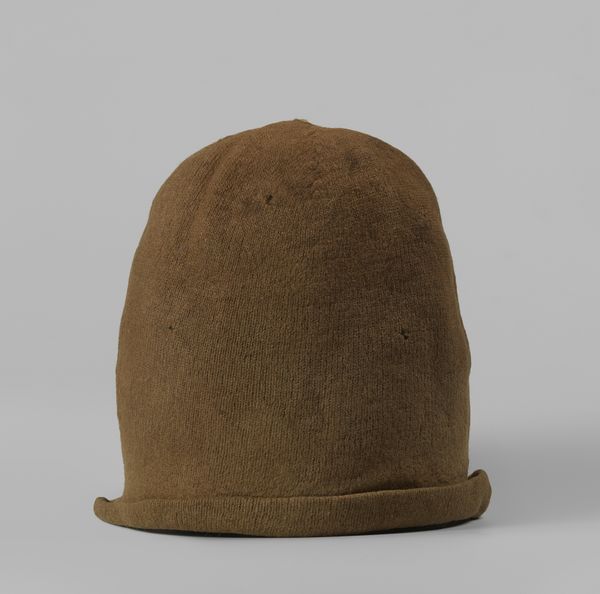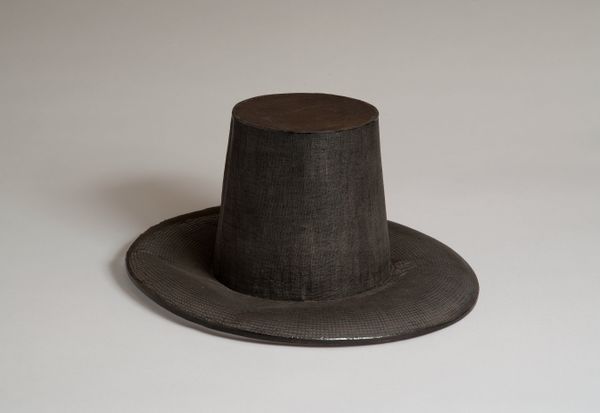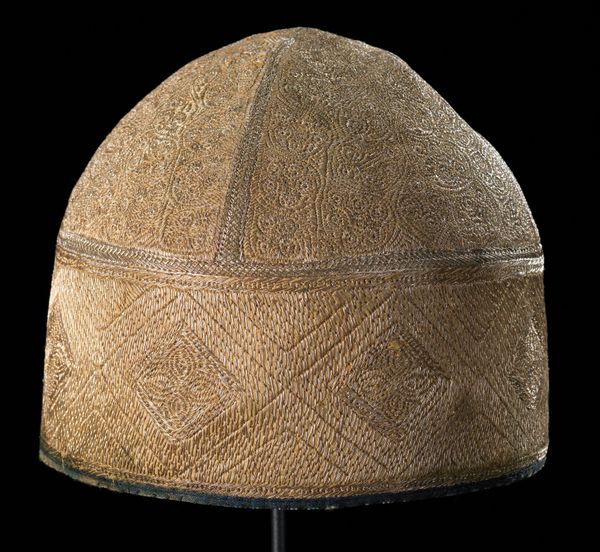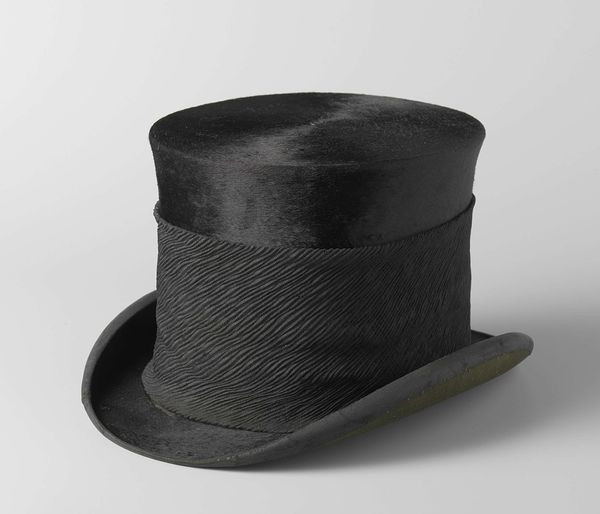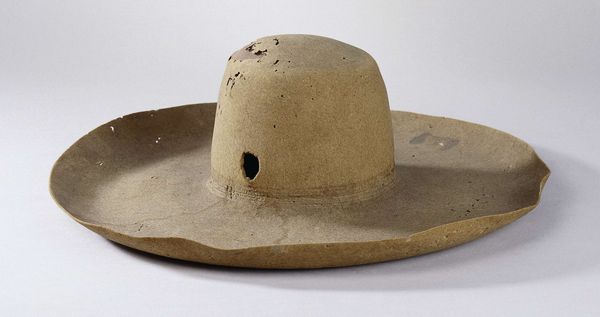
fibre-art, textile
#
fibre-art
#
asian-art
#
textile
#
japan
#
24_meiji-period-1868-1912
Dimensions: 5 1/2 × 12 in. (13.7 × 30.5 cm)
Copyright: Public Domain
Curator: Up next is "Bowler Hat" crafted between 1880 and 1897 by Hayakawa Shōkosai I, currently housed in the Metropolitan Museum of Art. What are your initial thoughts? Editor: It strikes me immediately with its paradoxical nature; this common Western shape rendered in an unexpected material – a woven fiber, instead of felt or wool. There’s a certain rigidity implied by the geometric weave that contrasts with the casual associations we have with bowler hats. Curator: Exactly! This is a superb example of Meiji period artistry in Japan. Bowler hats became fashionable among Japanese officials and businessmen emulating Western styles. Hayakawa skillfully adapted traditional bamboo weaving techniques to this foreign object, signifying cultural integration during modernization. The meticulous weave displays status but also acknowledges adaptation and possibly even conformity. Editor: I see the meticulous construction reinforcing that tension you describe. It invites close viewing, almost demanding that you focus on each strand, each tiny deviation. Semiotically, the original hat represents social mobility and middle-class aspiration but this artisan’s iteration in basketry speaks to local and global tensions. Curator: The material itself possesses meaning. Bamboo, readily available in Japan, has deep symbolic roots in Japanese culture: resilience, flexibility, and longevity. Using bamboo, then, imbues the hat with a quiet power that mass-produced Western versions simply lacked. Editor: The shadows cast by the woven texture deepen that reading. Formally, it isn't just about imitation. The choice of material—the subtle sheen, the textural variations—transforms a symbol of Westernization into something entirely its own. Look at how the craftsman has approached that binding! There’s a sensitivity here that mass-manufacture would miss. Curator: Ultimately, it speaks to the complex cultural exchanges that defined the Meiji era, showcasing ingenuity while negotiating identity amidst globalization. Editor: Agreed; my initial impressions of contrast become enriched. This dialogue between East and West becomes not a simple copy, but a carefully nuanced conversation articulated in the weave.
Comments
No comments
Be the first to comment and join the conversation on the ultimate creative platform.
